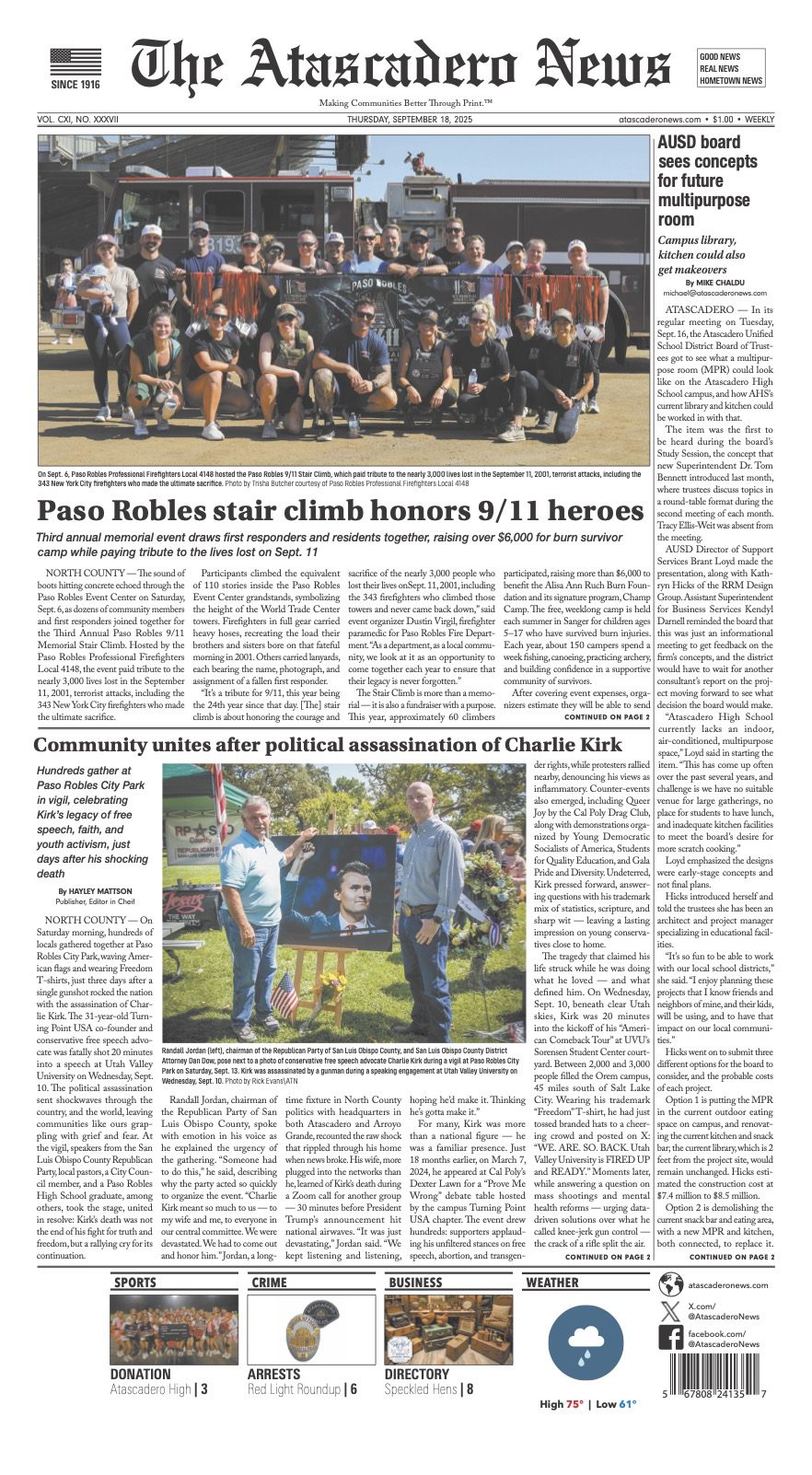By RAY WEYMANN
FOR THE ATASCADERO NEWS
Two aspirational resolutions introduced simultaneously in the House and Senate in February of this year have generated considerable controversy. Known as the “Green New Deal” (GND), it proposes to move the U.S. to zero greenhouse gas emissions, along with several complementary progressive social programs.
The purpose of this opinion piece is not to comment on the desirability or feasibility of the entire Green New Deal. But one little-discussed portion of the GND is relevant to San Luis Obispo County and deserves discussion. It advocates “working collaboratively with farmers and ranchers in the United States to remove…greenhouse gas emissions from the agricultural sector…by investing in sustainable farming and land-use practices that increase soil health.”
A recent local report found that agriculture contributes $2.5 billion annually and 14,000 jobs to the SLO County economy. Thus, I was interested in discovering a national organization, “Farmers and Ranchers for a Green New Deal” (FRGND), two members of which are farmers here in SLO county. The organization is supported by an international group “Regeneration International,” and both of these local farmers support the goal mentioned above.
I was also fortunate to contact two experts in what is called BEAM — Biologically Enhanced Agricultural Management — Cal Poly Emeritus Professor and Adjunct Professor at Cal State Chico Tim LaSalle, and Dr. David Johnson of New Mexico State University. Dr. LaSalle has spent much of his time promoting these practices in Africa in order to increase crop yields without a lot of costly fertilizers.
Some of the essential features of BEAM involve: An appropriate mix of fungal and bacterial components of soil through the use of a novel “biodigester” (composter) design, intelligent and frequent use of cover crops, “no-till” farming and carefully managed grazing practices. So, BEAM is more than ‘organic farming’ and is undoubtedly more than a ‘feel-good’ movement.
Its benefits are impressive and experimentally documented. These include better water retention for both water conservation and flood risk reduction, avoidance of the use of energy-intensive fertilizer and its adverse byproducts such as ocean blooms and dead zones, avoidance of health risks from the use of herbicides, improved crop yields, and improved nutritional value of crops. And last, but not least, given the goal of the Green New Deal, a very significant increase in the sequestration of atmospheric carbon dioxide into the soil appears achievable. Indeed if ‘advanced BEAM’ practices were implemented over 50 percent of the global arable land, Dr. Johnson estimates that most of the worldwide current carbon emissions could be offset by soil carbon sequestration.
I mentioned above the role of ‘carefully managed grazing practices,’ and this has caused me to rethink my belief that all cattle raising is terrible. BEAM practices can vastly reduce the amount of acreage and water needed for free-range cattle ranching thus mitigating much of the environmental damage from the cattle industry, especially those of the huge industrial feedlots. This doesn’t, of course, mean that there are not both health and ethical reasons for avoiding meat consumption, a choice that each individual must make.
I readily concede that large-scale adoption of these practices, either globally, nationally, or here in SLO County, will be a difficult task. For one thing, agriculture here and elsewhere is dominated by large corporate enterprises not readily willing to make the shift to the practices described above, nor will the hugely profitable pesticide, herbicide and commercial fertilizer industries avoid vigorously opposing BEAM practices.
For small family farms, not being able to match the large-scale production and current marketing practices and market access of “big ag” poses severe economic challenges. I visited one of the SLO green new deal farmers and saw what she was up against — and farming is hard work. There are also regulatory impediments, including state laws restricting the type of composting products that are allowed on food sold to the public. These should be re-examined.
As far as what individuals can do, you can seek farms and farmers markets where you can get food from those practicing ‘regenerative farming’ even though they do not meet all of the BEAM practices. Similarly, many local restaurants feature local products raised using environmentally friendly farming. And don’t shun produce that may have cosmetic defects. Yes, it will generally cost you a bit more in your food bill, but you will reap the health and other benefits enumerated above.
And you will taste the difference. My daughter-in-law regularly brings us produce, including heirloom tomatoes, right from her garden. Believe me, if you haven’t tasted them, you don’t know how tomatoes should taste!
To learn more about BEAM see: tinyurl.com/y4adf2wp.












